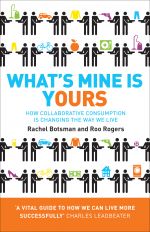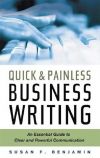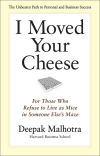Правообладателям!
Представленный фрагмент книги размещен по согласованию с распространителем легального контента ООО "ЛитРес" (не более 20% исходного текста). Если вы считаете, что размещение материала нарушает ваши или чьи-либо права, то сообщите нам об этом.Читателям!
Оплатили, но не знаете что делать дальше?
Текст бизнес-книги "What’s Mine Is Yours"
Автор книги: Rachel Botsman
Раздел: Зарубежная деловая литература, Бизнес-книги
Текущая страница: 2 (всего у книги 3 страниц)
Part 1

CONTEXT
Chapter One
Enough Is Enough
Way out in the Pacific Ocean, just east of Japan and west of Hawaii, a gigantic accidental monument to the waste of modern consumerism has formed. The Great Pacific Garbage Patch is the largest landfill in the world, except that it is not on land; it’s in the ocean. This swirling mass of rubbish is estimated to be roughly twice the size of Texas and in some parts one hundred feet deep, if not deeper. It’s a floating stew of 3.5 million tonnes of garbage, 90 percent of which is plastic, containing everything from bottle caps and toys to shoes, cigarette lighters, toothbrushes, nets, babies’ dummies, wrappers, takeaway containers and shopping bags from all corners of the world.
For years the patch was out-of-sight, out-of-mind, lying just beneath the surface of the water, invisible to satellites. The patch is located in a remote part of the ocean that is usually dodged by sailors because of its gentle breezes and extreme high pressure systems and shunned by fishermen, who call it the ‘desert’ due to its lack of fish. Charles Moore, a sailor, environmentalist, organic farmer and onetime furniture repairman, discovered the patch by accident on 3 August 1997. He was on his way home with his crew after finishing in third place in the Los Angeles – to-Hawaii sail race known as the TransPac, when he decided to take a shortcut. He steered the Alguita, an aluminium-hulled catamaran, into the North Pacific Subtropical Gyre – a part of the ocean known for its vortex of swirling undercurrents that trap debris. Moore, an old sea dog who had been voyaging in the Pacific since childhood, knew that the region lacked the wind to propel the boat but was not worried, as the Alguita was equipped with engines and an extra supply of fuel.
In the week it took them to cross the Gyre, the crew were astonished to find themselves surrounded by so much floating rubbish in such a desolate place, thousands of miles from land. As Moore later wrote in his story about the discovery, ‘I often struggle to find words that will communicate the vastness of the Pacific Ocean to people who have never been to sea. Day after day, the Alguita was the only vehicle on a highway without landmarks, stretching from horizon to horizon. Yet as I gazed from the deck at the surface of what ought to have been a pristine ocean, I was confronted, as far as the eye could see, with the sight of plastic.’
Moore resolved to return to the area as soon as he could on a proper trawling and research mission with marine scientists to start to learn what was going on. And so he did, just over a year later, with a team of volunteers and a net apparatus resembling a manta ray that skimmed the ocean surface. The crew found ‘a rich broth of minute sea creatures mixed with hundreds of thousands of plastic fragments – a plastic-plankton soup’.[19]19
Susan Casey, ‘Our Oceans Are Turning into Plastic . . . Are We?’ Best Life Magazine (20 February 2007).
[Закрыть] Venturing out on inflatable dinghies, they picked up everything from a cathode-ray tube for televisions to a traffic cone to a gallon bleach bottle so brittle it crumbled in their hands. Birds and fish mistake the plastic for food, especially the bottle caps, which Moore calls ‘poison pills’. One bird, when dissected, contained 1,603 pieces of plastic.[20]20
Ibid.
[Закрыть]
The Great Pacific Garbage Patch, sadly, isn’t a lone phenomenon, though it is perhaps the biggest of them all. Together, these areas could cover 40 percent of the sea. ‘That corresponds to a quarter of the earth’s surface,’ Moore says. ‘So 25 percent of our planet is a toilet that never flushes.’[21]21
Ibid.
[Закрыть] To convey the scope of the problem, Moore likes to give the example of Pagan Island (between Hawaii and the Philippines), where there is a ‘shopping beach’. ‘If the islanders need a cigarette lighter, or some flip-flops, or a toy, or a ball for their kids, they go down to the shopping beach and pick it out of the plastic trash that’s washed up there from thousands of miles away.’[22]22
This section was heavily influenced by Richard Grant’s, ‘Drowning in Plastic: The Great Pacific Garbage Patch Is Twice the Size of France’, Daily Telegraph (24 April 2009), www.telegraph.co.uk/earth/environment/5208645/Drowning-in-plastic-The-Great-Pacific-Garbage-Patch-is-twice-the-size-of-France.html.
[Закрыть]
Rubbish has been tossed into the seas for centuries. In preindustrial culture, it was broken down over time by microorganisms, as the materials, for the most part, were safely biodegradable. Today we have a spectacular abundance of products heavily dependent on plastic, a material that in any shape or form is 100 percent nonbiodegradable. The 100 million tonnes of plastic produced each year will always exist; it just ‘photo degrades’ by the sun into smaller pieces and then smaller pieces resembling confetti.[23]23
Statistics on annual consumption of plastic materials come from ‘Plastics Recycling Information’. Retrieved August 2009, www.wasteonline.org.uk/resources/InformationSheets/Plastics.htm.
[Закрыть] Even the 5.5 quadrillion lentil-size plastic polymers, known as ‘nurdles’, made each year for our plastic-wrapped and packaged world are too tough for even the most voracious bacteria to break down. Plastic now outweighs surface plankton six to one in the middle of the Pacific Ocean.[24]24
Thomas M. Kostigen, ‘The World’s Largest Dump: The Great Pacific Garbage Patch’, Discover Magazine (10 July 10 2008), http://discovermagazine.com/2008/jul/10-the-worlds-largest-dump.
[Закрыть]
The Great Pacific Garbage Patch is a hideous illustration of the way we’ve ignored the negative consequences of modern consumerism. In the past fifty years, we have consumed more goods and services than in all previous generations put together.[25]25
Paul Hawken, Amory Lovins and L. Hunter Lovins, Natural Capitalism (Rocky Mountain Institute, 1999), 4, www.natcap.org/sitepages/pid5.php.
[Закрыть] Unfortunately, the consume-and-dispose engine is only going faster. Since 1980, we have consumed one-third of the planet’s resources – forests, fish, natural minerals, metals and other raw materials.[26]26
Tim Radford, ‘Two-Thirds of World’s Resources “Used Up”,’ Guardian (30 March 30 2005), www.guardian.co.uk/science/2005/mar/30/environment.research.
[Закрыть] Deforestation in the tropics destroys an area the size of Greece every year – more than 250 million acres. Americans are some of the world’s worst environmental offenders. A child born today into a middle-class American family will live to about eighty years old and consume on average 2.5 million litres of water, the wood of 1,000 trees, 21,000 tonnes of petrol, 220,000 kilos of steel and 800,000 watts of electrical energy. At these rates, the average American child will produce in his or her lifetime twice the environmental impact of a Swedish child, 3 times that of an Italian, 13 times that of a Brazilian, 35 times that of an Indian and 280 times that of a Haitian.[27]27
Ervin Laszlo, The Chaos Point: The World at the Crossroads (Hampton Roads Publishing Company, 2006), 17.
[Закрыть] If everyone on the planet lived like the average American child, we would need five planets to sustain them during their lifetime.[28]28
Global Footprint Network and WWF’s Living Planet Report (September 2009), www.footprintnetwork.org/images/uploads/EO_Day_Media_Backgrounder.pdf.
[Закрыть]
Sadly, it would seem that the vision of unlimited consumption that Victor Lebow, a retail analyst, put forward in 1955 has come to fruition. ‘Our enormously productive economy,’ he said, ‘demands that we make consumption our way of life, that we convert the buying and use of goods into rituals, that we seek spiritual satisfaction, our ego satisfaction, in consumption. The economy needs things consumed, burned up, worn out, replaced, and discarded at an ever increasing rate.’[29]29
Victor Lebow, ‘Price Competition in 1955’, Journal of Retailing (Spring 1955), www.scribd.com/doc/965920/LebowArticle.
[Закрыть]
A big part of the problem is that many of our consumer behaviours have become so habitual that we are unaware of our impact. Psychologists call this consumer ‘lock-in’, as it can be difficult to make deliberate choices about what to buy and what not to buy because habits, routines, social norms and cultural values lock us into unsustainable behaviours. One example would be buying bottled water.[30]30
Tim Jackson, ‘Motivating Sustainable Consumption: A Review of Evidence on Consumer Behaviour and Behavioural Change’, published in a paper by the Centre for Environmental Strategy, University of Surrey (2005), www.epa.gov/sustainability/Workshop0505/5d_Jackson_Tim.pdf.
[Закрыть] These behaviours stick because individuals acting in their own self-interest feel immediate gain, but they will not feel the losses from the impact of their actions for many years to come. We are always tempted by immediate self-gratification. At the same time, our brains cannot comprehend the cumulative impact at a collective level. If all the world’s 1 billion personal computers were switched off for just one night, it would save enough energy to light up New York City’s Empire State Building – inside and out – for more than thirty years.[31]31
Statistics on PC energy usage are from the 2009 P.C. US Energy Report, www.1e.com/EnergyCampaign/downloads/PC_ EnergyReport 2009-US.pdf.
[Закрыть] Artist Chris Jordan, who creates arresting images about unimaginable statistics of western culture, puts it this way: ‘As individuals we do these things all the time every day. But when millions of people go about these unconscious behaviours it can add up to a catastrophic consequence that nobody wants, and that nobody intended.’[32]32
The artist Chris Jordan talked about this idea during his talk at the TED conference (June 2008). The video can be viewed at www.ted. com/talks/chris_jordan_pictures_some_shocking_stats.html.
[Закрыть]
The Emergence of Throwaway Living
In 1907, Hugh Moore and his college roommate, Lawrence Luellen, dropped out of Harvard to pursue a business idea. At the time, people drank at public water fountains from the same ‘tin-dipper’ cups, which were rarely washed and never replaced. The friends, aware of recent findings that diseases were spread through sharing cups like these, spotted a moneymaking opportunity. Luellen had come up with the idea of a water vending machine with paper cups, and together he and Moore bought a factory, located next door to Alfred Schindler’s Dixie Doll Company. Shortly after, they introduced the first paper cup, known as the ‘Health Kup’. Moore, who never liked the original name for the cup, noticed the word ‘Dixie’ every day, as it was printed on the doll company’s front door. ‘Dixie Cups’ were born.[33]33
‘Dixie Cup Company History’, Lafayette College Libraries (August 1995), www.lafayette.edu/~library/special/dixie/company.html.
[Закрыть]
The idea was not a runaway success. But eight years later, Moore and Luellen repitched Dixie Cups for ‘clinical use’. The friends and business partners became known as ‘The Cup Campaigners’ with a widespread education blitz telling the public that single repeat-use metal cups at water fountains were the main source for germ contamination. Only disposable cups were sanitary. They distributed a pamphlet with a graphic illustration of a cup in the shape of a skeleton perched on a fountain. This campaign was not all propaganda. The common drinking cup did spread serious diseases, in particular tuberculosis and smallpox, and in this sense the disposable paper cup did have a positive impact on society. Fast-forward to today, and a staggering 220 billion paper and plastic cups are used worldwide per year, with 146 billion cups consumed in North America alone. A day’s worth of cups is as high as a forty-two-storey building.[34]34
Jordan, TED talk.
[Закрыть]
For manufacturers, a product that is thrown away after being used, forcing the customer to keep coming back for more, creates endless profit potential; a potential first discovered in the years after World War I, when there was a great need to find new uses for the abundance of materials produced for the war piled high in warehouses. For example, an absorbent material made from celluloid that had been used for military bandages and gas mask filters later gained a new use as the disposable Kotex sanitary towel. Manufacturers also had to figure out how to transform the wartime ethic of thrift and reuse – darning socks, keeping odd pieces of string, using tea leaves to clean carpets, and sewing rags into rugs – into a culture that embraced ‘throwaway habits’ and the willingness to spend money on new ‘stuff’. During the war, the US government produced posters declaring ‘Waste Not, Want Not.’ By late 1917, the government was giving shops across the country signs to display in their windows reading ‘Beware of Thrift and Unwise Economy’, to help encourage repetitive consumption.[35]35
Giles Slade, Made to Break: Technology and Obsolescence in America (Harvard University Press, 2006), 25.
[Закрыть]
Advertisers touted mass-disposable goods as more convenient, time-saving and hygienic than reusable products. They became increasingly attractive in the early fifties as more women entered the workforce, were pressed for time and had greater disposable income. It is not surprising that it was against this backdrop that entire lines of disposable products flooded the market, including Kleenex tissues, Q-tips, Band-Aids, paper towels, paper straws, disposable shopping bags and so on. And along with these products came the boxes and cartons they were packaged in and the ads, catalogues and window displays to promote them; more stuff used and then thrown away. Thirty years later, in 1955, Life magazine ran a front cover with the headline ‘Throwaway Living’ and a photo of a three-child family tossing various disposables high in the air, including paper plates and trays, aluminium pie pans, and nappies. The overall message was liberation for housewives, as disposability became synonymous with convenience and a metaphor for freedom.[36]36
Susan Strasser, Waste and Want: A Social History of Trash (Henry Holt and Company, 1999). Strasser talks at length about the connections between disposability and woman’s liberation.
[Закрыть]
Looking back on these relatively simple and useful inventions, you may wonder: What was the harm? People embraced new products in the name of progress, and these products have their benefits. The crucial shift was when the cultural acceptance of disposability broadened past health concerns. How did disposable cups become ubiquitous in our homes and offices, where people have easy access to sinks to clean their own mugs or glasses? How did disposability change from a symbol of health to one of waste and environmental mess? And therein lies the constant tug-of-war between what is seen as progress at the time and future damage.
When Leo Baekeland invented Bakelite, the first man-made plastic, in 1907 – the same year Moore and Luellen started to pursue their cup idea – he intended to make a material that could be bent, moulded, twisted and plied in a number of different ways. It’s impossible that he could have foreseen that Americans alone would one day dispose of about 100 billion plastic bags each year. Most are used just once and discarded.[37]37
Kay Bushnell, ‘Plastic Bags: Smothered by Plastic’, a paper produced by the Sierra Club, www.sierraclub.org/sustainable_consumption/articles/bags1.asp.
[Закрыть] The stories of the paper cup and plastic waste both follow the ‘law of unintended consequences’, where the actions of people have unanticipated and unintended effects, in some cases more significant than the intended effects. Sociologist Robert K. Merton identified five sources of unintended consequences: ignorance, error, immediate interest, basic values and selfdefeating prophecy. Two of these sources are particularly relevant to hyper-consumption: first, ignorance (it’s impossible to anticipate everything); and second, the imperious immediacy of interest. By the latter Merton was referring to instances in which an individual wants the intended consequence of an action (or product) so much that he purposefully chooses to ignore any long-term unintended effects. Both shoppers and manufacturers engage in a combination of these as they participate in the modern-day consumer system.
Just like the Great Pacific Garbage Patch, the environmental effects of consumerism sit just below the surface, a hidden history of materials, resources and impacts. The amount of waste matter generated in the manufacture of a single laptop computer, for instance, is close to four thousand times its weight.[38]38
Hawken et al., Natural Capitalism.
[Закрыть] The tiny micron chip inside that same computer requires 1.7 kilograms of materials to produce and its production generates 100,000 times its weight in waste.[39]39
Sarah Graham, ‘Making Microchips Takes Mountains of Materials’, Scientific American (6 November 2002).
[Закрыть] Until recently, much of the hazardous e-waste from products including old computers, mobile phones and televisions from wealthier nations was shipped to countries in the developing world, including China, Pakistan and Bangladesh. Even though restrictions imposed in the Basel Convention by the United Nations have slowed the export of e-waste exportation, it continues on a gargantuan and destructive scale.[40]40
Slade, Made to Break, 5.
[Закрыть] For the most part, marketers don’t put this kind of information on the label. That’s the ‘ignorance’ part of Merton’s analysis. But we keep our laptops for only two years on average (it was six years in 1997).[41]41
‘The E Waste Problem’, posted on the Greenpeace website, www.greenpeace.org/international/campaigns/toxics/electronics/the-e-waste-problem.
[Закрыть] That is a conscious choice we make in the immediacy of self-interest. As John Thackara says in Inside the Bubble, ‘It’s the accumulation of such tiny, unnecessary acts that weigh so heavily on the planet.’[42]42
John Thackara, Inside the Bubble (MIT Press, 2006), 22.
[Закрыть]
We are now a society addicted to ‘throwaway habits’, and many of us are anaesthetized to the consequences. In Britain, every man, woman and child in the country combined produces enough waste to refill London’s Royal Albert Hall every two hours.[43]43
Neal Lawson, All Consuming (Penguin, 2009), 41.
[Закрыть] According to the EPA, only 30 percent of this rubbish is recycled or composted, 13 percent is incinerated, and the other 57 percent ends up in landfills. What exactly do we throw out – and why is there is so much of it?
David Chameides, an Emmy award-winning cameraman in Los Angeles, wanted to find out. He decided to conduct an experiment: he would not throw anything away for one whole year. Chameides kept every single item of rubbish that he created at home and on the road in the cellar of his house. A large tin box was used to hold bags of waste paper, and rubbish bins to hold the rest. Most of the family’s leftover food was given to the dog and the rest was put into a worm composter. Dave created some rules. Any waste that was not safe – medical waste from doctor’s visits, for instance – would be disposed of. The experiment did not apply to his wife and two children. Beyond that, he didn’t create a masterplan for his year of no trash.[44]44
Brian Walsh, ‘Meet Dave, the Man Who Never Takes Out the Trash’, Time (22 September 2008), www.time.com/time/health/article/0,8599,1843163,00.html.
[Закрыть] Dave even admits, ‘If I had totally thought it through, I might not have done it.’ But he did take the experiment seriously, so much so that he even brought the rubbish back in a suitcase from a romantic getaway with his wife in Mexico. Airport screeners baffled by the extra holdall of Mexican rubbish that went through the X-ray machine interrogated the couple.
Soon after he began his experiment, Dave realized the obvious solution. The best way to reduce the amount of trash he produced was to cut back on the amount he consumed in the first place. By taking his own containers to the fishmonger to avoid the wrapping and paying a company to stop his junk mail, he limited his waste for a whole year to thirty pounds (after subtracting recyclable waste), roughly the amount the average American produces in six days.[45]45
Ibid.
[Закрыть]
All the ‘good stuff’ we throw away represents just a small amount, given that for every rubbish bin of waste we put out on the pavement, seventy additional bins of waste were produced upstream in production and distribution to make the waste in your bin.[46]46
Annie Leonard, The Story of Stuff (Free Press, 2010). The transcript of the video can be found at www.storyofstuff.com/pdfs/annie_ leonard_footnoted_sript.pdf.
[Закрыть] Annie Leonard explains in her book The Story of Stuff, ‘Guess what percentage of total material flow through this system is still in product or use 6 months after their sale in North America. Fifty percent? Twenty? NO. One percent. One! In other words. . 99 percent of the stuff we run through this system is trashed within 6 months.’[47]47
Ibid.
[Закрыть] And the stuff we throw away is just one half of the waste. The other half is all the stuff we buy and never or rarely use.
Self-Storage Self
Think, for a moment, about something you bought that you never ended up using. An item of clothing you never ended up wearing? A book you never read? Some piece of electronic equipment that never even made it out of the box? It is estimated that Australians alone spend on average $10.8 billion AUD (approximately $9.99 billion USD) every year on goods they do not use – more than the total government spending on universities and roads. That is an average of $1,250 AUD (approximately $1,156 USD) for each household.[48]48
Clive Hamilton, ‘Why Consumer Capitalism Loves Waste’, quoted in his speech to the 6th Asia Pacific Roundtable for Sustainable Consumption and Production (October 2005), www.clivehamilton. net.au/cms/media/documents/articles/Consumer_Capitalism_ Loves_Waste.pdf.
[Закрыть] All the things we buy that then just sit there gathering dust are waste – a waste of money, a waste of time, and waste in the sense of pure rubbish. As the author Clive Hamilton observes, ‘The difference between the stuff we buy and what we use is waste.’[49]49
Ibid.
[Закрыть] Rubbish and storage are just two different endgames of the same problem.
We live in a world where our drawers, closets, walk-in wardrobes, attics, garages, sheds and cellars are bloated with mountains of objects we rarely use and forget we even have. By the early 1990s, American families had, on average, twice as many possessions as they did twenty-five years earlier.[50]50
Jon Mooallem, ‘The Self-Storage Self’, The New York Times (2 September 2009), www.nytimes.com/2009/09/06/magazine/06self-storage-t. html?pagewanted=1&_r=1.
[Закрыть] So much stuff has been bought that it doesn’t fit into our homes anymore, and so we rent storage to extend the capacity to own more things. Just as Cyril Northcote Parkinson, a British civil servant, mused in The Economist in 1955 that ‘Work expands so as to fill the time available for completion,’ many of us fall victim to Parkinson’s Law when it comes to storage: more space increases our tendency to acquire more stuff. Just as plastic migrates to the Great Pacific Garbage Patch, these things get stored away, out-of-sight, out-of-mind.
If you’ve ever travelled from an airport into a city, say London or New York, and noticed the abundance of self-storage warehouses along the route, you begin to see the extent of the problem. These buildings sit on the sides of orbital motorways, sprout from the landscape of suburbia or are wedged into commercial strips in a city’s central core. Regardless of their location, they look the same: grey, massive cinder blocks with halogen lamps glaring 24/7.
In 1964, Russ Williams, a Texas oil industry businessman and avid fisherman, got the idea to open ‘mini-warehouses’ called the A–1 U-Store-It U-Lock-It U-Carry the Key from his own need to store boats and oil field equipment securely but accessibly. He designed the first facility based on the pattern of side-by-side garages often found in apartment complexes with block partitions and panel garage doors. It was just one hundred feet by thirty feet in size and was painted yellow and black to draw attention to it. Williams realized that his residential customers wanted to store not just boats but items they did not have room for in their homes. The idea caught on so fast that it was hard to keep up with the demand. Williams built more and more facilities until he eventually owned (with various partners) 2,500 across the United States.
Today there are more than 53,000 personal storage facilities – more than seven times the number of Starbucks – in the United States. This amounts to a staggering 2.35 billion square feet or more than 38,000 football fields put together in America alone.[51]51
Statistics on growth and size of the self-storage industry come from the Self Storage Association. Last checked on February 2010, www.selfstorageassociation.org.
[Закрыть] If you put out your arms, you create about seven square feet around you. That is roughly how much self-storage space there is for every man, woman and child in America. It means every single person in the country could comfortably stand together inside self-storage units.[52]52
Chris Arnold, ‘Americans Keeping More Possessions “Off-Site”’, for a segment on National Public Radio (20 May 20 2005), www.npr.org/templates/story/story.php?storyId=4660790.
[Закрыть] And self-storage is now a $22 billion-per-year industry in the United States – surpassing domestic Hollywood box-office sales. On average we spend more on self-storage than milk, coffee and even beer. Rentable storage has increased by 740 percent in the past two decades.[53]53
Martin John Brown, ‘Too Much Stuff! America’s New Love Affair with Self-Storage’, AlterNet (June 4, 2008), www.alternet.org/work place/86998.
[Закрыть] As Chris Sonne, a storage expert at Cushman & Wakefield, comments, ‘That’s two or more self-storage facilities opening every day for fifty years. That beats McDonald’s.’ About 30 percent of the storage boom comes from use by businesses storing things such as payment records, office equipment, and inventory, but the rest of the expansion has come from people storing possessions that no longer fit in their homes.[54]54
Ibid.
[Закрыть]
So what are we cramming into these storage units? Camping gear, lawn mowers, roller skates, pet cages, bread makers and other electronic gadgets, back issues of National Geographic magazine, old souvenirs, children’s bicycles, a computer monitor that just might work one day, a clarinet we played in primary school, years of bank receipts, an old sofa – the list goes on. But for the most part, it is ‘just stuff’ we no longer want cluttering our homes but pay to store anyway.
Rich Ellmer is a self-storage veteran who has owned and operated more than two hundred Cypress Storage Units in Austin, Texas, since 1976. Over the past quarter of a century, Ellmer has seen the same storyline unfold many times. People rent a space and start off thinking they will rent it for a month or two. They end up keeping it a lot longer, for years, sometimes more than a decade, with some renters never clearing out their stuff. Every month, a fee is automatically debited from their bank account, on average ranging from $99 to $195 depending on the amount of storage. ‘Generally, after six to eight months, the money people pay for the storage exceeds the value of the items,’ Ellmer says. ‘It’s easier just to write a cheque for another month and pay. People just don’t want to be bothered.’ Gradually, however, some of his tenants realize that the stuff they are keeping is worth less than what they are paying to store it and one day just ask for it all to be thrown away.[55]55
Story of Rich Ellmer comes from Rob D’Amico, ‘What’s in Store? Has Mini-Storage Become Mega-Storage’, Austin Chronicle (1 September 2000), http://www.austinchronicle.com/gyrobase/Issue/story?oid=oid%3A78464.
[Закрыть]
Правообладателям!
Представленный фрагмент книги размещен по согласованию с распространителем легального контента ООО "ЛитРес" (не более 20% исходного текста). Если вы считаете, что размещение материала нарушает ваши или чьи-либо права, то сообщите нам об этом.Читателям!
Оплатили, но не знаете что делать дальше?





